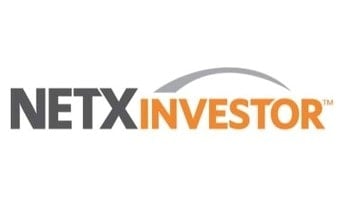Being a first-time homebuyer isn’t quite as easy as it looks—especially if you’re a young professional with a budding family, an emerging career, perhaps some student loans or consumer debt to tackle, and an ever-growing list of financial priorities vying for your paycheck.
Some of your parents’ friends tell you that renting is a waste, but are you really ready to buy? The last thing you want to do is get in over your head and watch the vast majority of your hard-earned income flow right out of your pocket and into your mortgage payment. This is what is not-so-lovingly referred to as being “house poor,” and everyone I have ever met in this position is at least somewhat miserable being in it.
So, you’ve got to get a handle on your bigger financial picture before you consider buying your first home. While buying can be a great financial choice, it isn’t for everyone—at least not yet. Sometimes some financial work needs to be done up front to position yourself to buy.
1) Build a Strong Foundation First
Building a strong financial foundation is the critical first step on your home-buying journey. At this juncture, you’ll want to make sure you (1) have a financial foundation of cash in place and (2) are consistently saving for the long term.
But, how much cash will I need? And how much of my paycheck should I be saving?
The answer to the first question is pretty simple (and standard). Before committing to a home purchase, you want to have at least three to six months of cash stored in an emergency fund. This should be enough to cover your basic living expenses for three to six months should you lose your job or experience temporary unemployment. Be sure to include an estimate for 3 to 6 months of new home expenses in your emergency fund, since your expenses will go up once you purchase a home.
As far as saving for the long term goes, we ideally recommend having a goal of contributing at least 10 to 15 percent of your gross salary to retirement accounts (401(k), 403(b), IRA, etc.). Does that mean if you aren’t contributing 10 to 15 percent that you’re out of luck? Not necessarily. It’s the ideal, but it’s not a requirement.
The only requirement is that you are contributing something. Start, at least, with contributing the amount you need to receive your employer match (if there is no employer match, we recommend starting with 6% of your gross salary). Then, each year as you earn more or your wages are adjusted for the cost of living, automatically sock that extra income away by increasing your contribution by one percentage point annually. You won’t miss the money if you aren’t used to having it in the first place. It’s a relatively pain-free way to increase your contributions, stay on track, and get to that 10 to 15 percent long-term savings rate.
Now, a third piece to this foundational puzzle is optional, but highly recommended. We strongly suggest having $20K to $30K available in cash to perform any necessary renovations or updates that the house may need prior to occupancy. These funds can also help to furnish the house and outfit it with all the essentials you’ll need from cookware to linens, household tools, ladders, trash cans, new locks for the doors, and more that you perhaps don’t have in your stockpile just yet. You may need to replace old, stained carpets or rusty bathroom fixtures.
While we aren’t pessimistic enough to say “anything that can go wrong, will,” the likelihood of your house being “move-in-ready” is slim-to-none, and things can break at a moment’s notice. You need to be prepared for these possibilities—not just to reduce potential stress on your finances, but to reduce stress on yourself.
Keep in mind, $20K to $30K is just a number to start with. We recommend erring on the side of overestimation here. Having too much is better than not having enough, and you’ll likely find plenty of meaningful ways to utilize the extra cushion. If you don’t need it, it can be assigned to another outstanding financial goal once you’re settled.
2) Don’t Buy More Than You Can Afford—The 28% Rule
Here is how you decide if you can afford the house you want to own. Follow the 28% rule. In other words, don’t let your maximum household expenses exceed 28% of your gross monthly income.
What do “maximum household expenses” include? In short, remember the acronym PITI.
P = Principal payment on your mortgage
I = Interest
T = Taxes
I = Insurance
Add up the monthly maximum household expenses and divide the figure by your monthly gross income. This will illustrate the affordability of your prospective new home. Please note, the 28% rule is how much house you can afford. However, you may not want to purchase a home at the top of your affordability range and instead shoot for a 25% rule.
More often than not, if you are financing your home, you will have the option of rolling the Insurance and Property Tax expenses into your monthly payment. That said, we recommend paying them separately, so you receive the interest earned on your savings prior to paying the expense. Homeowners don’t earn interest on their money when it’s in an escrow account.
If you don’t truly understand what you can safely afford, you may end up with a mortgage that will financially drain you.
3) Consider Your Debts—Both Student Loans and Consumer Debt
This point really is a continuation of point #2 in that your debt burden—student loans or otherwise—should be considered when deciding how much home you can afford. That’s because making payments on debts puts a drag on your cash flow . And if you have too much drag on your cash flow, the lending company may deem you ineligible for funding.
All debts have an impact on your ability to secure a loan. Student loans don’t affect your ability to get a mortgage any differently than other types of debt you may have, including auto loans and credit card debt. When you apply for a mortgage, your lender will assess all of your existing monthly payment obligations, including student loans, to determine whether you would be able to manage the additional monthly payment. Depending on your situation, the lender will decide whether you qualify for the new loan, and if so, at what interest rate.
Mortgage companies consider your monthly income and expenses to gauge financial health. Therefore, the size of your student loan payment is more important than the overall debt total. In other words, they’re looking to see if you have too many monthly expenses to be able to afford your potential mortgage payment.
The bottom line is that you need to be able to manage all your monthly payment obligations with your current income.
4) Deciding on a Fixed or Adjustable Rate Mortgage
There are essentially two standard loan types to seek when going to purchase real estate—a fixed rate loan and an adjustable rate loan. Overall, fixed rate loans are far less risky than adjustable rate mortgages, and that’s because adjustable rate mortgages can change your monthly payment drastically from one year to the next. Right now, interest rates are rising and could possibly increase further. When this happens, you have two options. You can try and refinance before rates rise too high or when the initial rate expires.
Essentially, a fixed rate mortgage lessens your interest rate risk, whereas an adjustable rate mortgage transfers the risk of rising interest rates (we do not know if interest rates will go up or down) to you the homeowner.
This should go without saying, but the less risk you can take as a new homebuyer, the better! You will already be on the hook for ongoing maintenance and repair on your home. You don’t need to add in the extra risk of a rising rate.
5) Where to Hold Funds for a New Home Purchase
Where you keep your money is often just as important as how much you have. If you have a ton of assets locked away in a retirement account or brokerage account, that’s great—as long as you don’t need access to them anytime soon. But, when you’re saving for a certain financial milestone that is within 5 years’ reach, you won’t want to subject your savings to a potential market downturn.
That’s why we recommend if your home purchase is less than five years away that your funds be invested in lower risk assets to avoid a loss prior to purchase. If the home purchase is less than 2 years out, hold the funds in an online high yield savings account. You do not want to risk your home down payment or the money you’ll need to fix it up, furnish, and make it your own.
Overestimate How Much Owning Your First Home Will Cost
While these rules can help you decide on the right financial time to purchase your first home, they aren’t going to be your only needs. Once you move in, you may also find yourself in need of lawn maintenance, pool maintenance, TV and internet setup, and more. Always overestimate what you think your post move-in expenses will be and be patient about spending too much after making this large purchase. You’ll want to pace yourself and your home renovation fund to make the process of buying your first home smooth and enjoyable.



